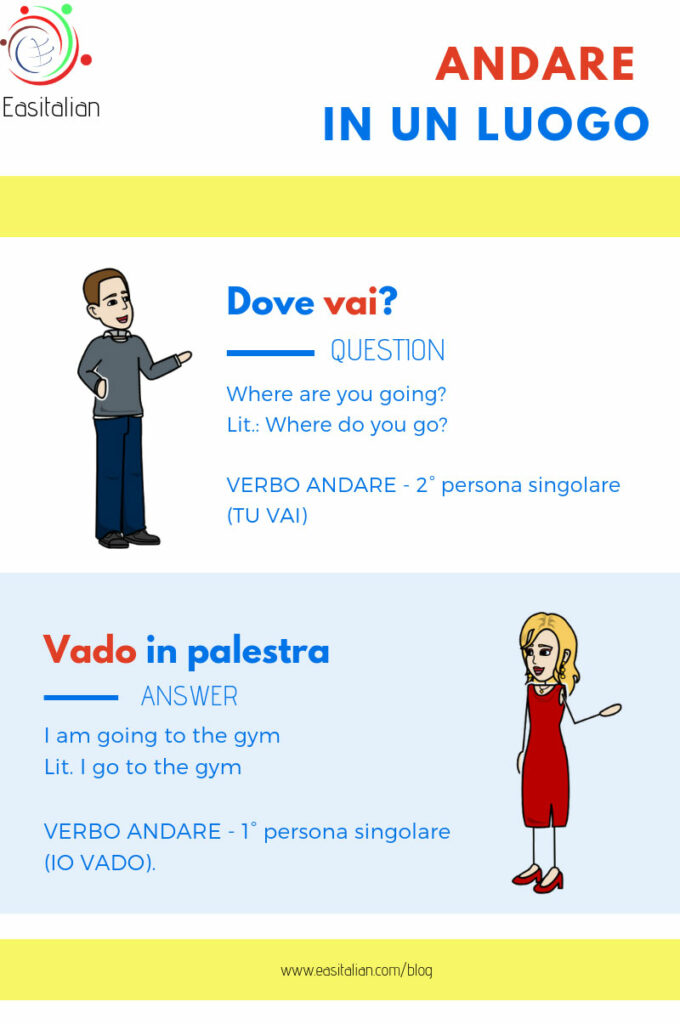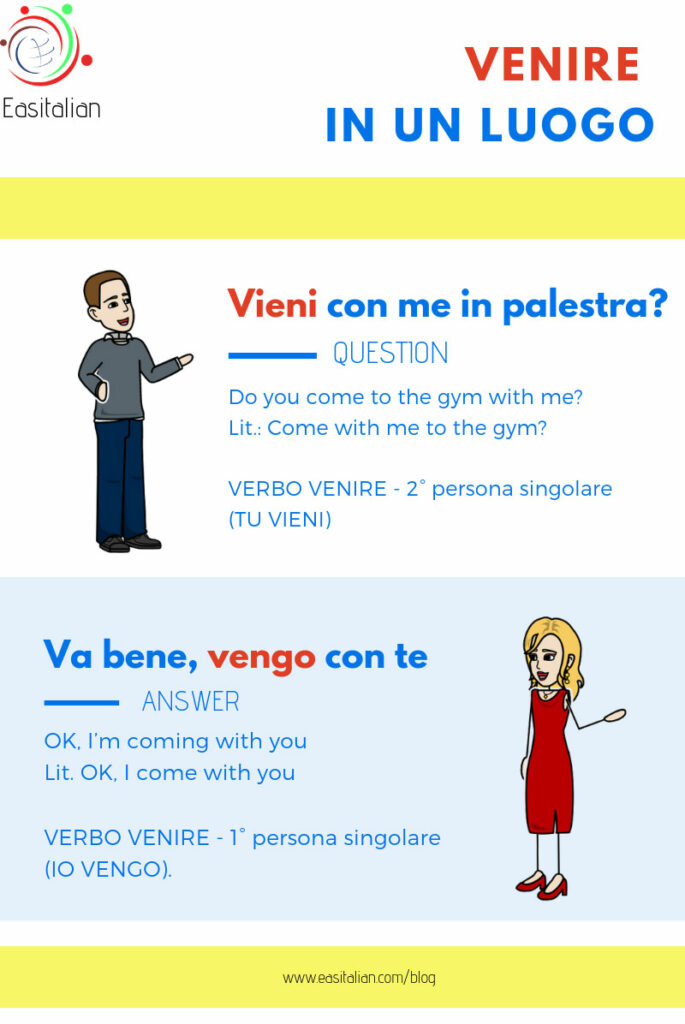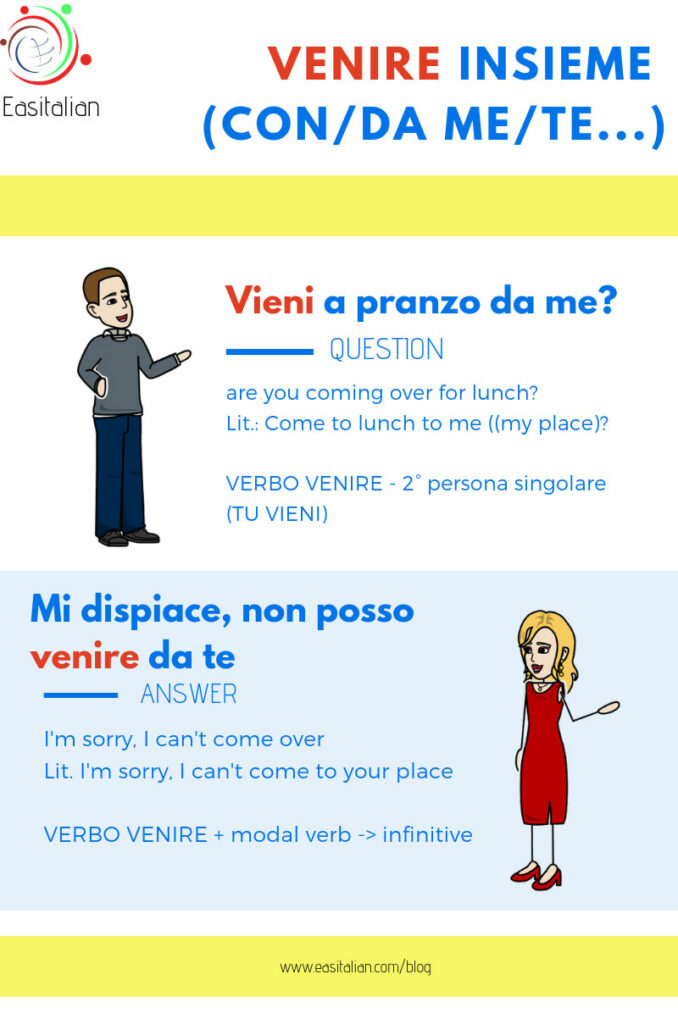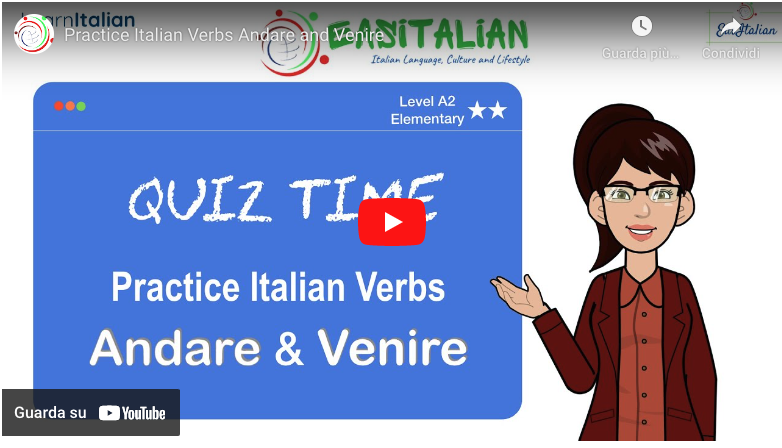Sometimes those who study Italian, make confusion using the verbs andare and venire mainly because in Italian these verbs indicate different movements and are used in a very precise way.
In this blog post, we will unravel the differences behind these verbs and explore how to use them correctly in various contexts.
If you find it difficult to use these two verbs, it will be useful to read this article.
Andare means to go or to move
Venire means to come
To go to a place

Examples:
Dove vai? (where are you going?)
Vado in palestra (I go to the gym)
To come to a place

Vieni con me in palestra? (do you come to the gym with me?)
Va bene, vengo con te (OK, I’m coming with you)
To come with me/you…/ to come over)

Vieni a casa mia (you come to my home)
Vengo a casa tua (I come to my home)
Vieni da me (you come and see me)
Vengo da te (I come an see you)
Esempi:
- Maria viene a casa mia. (Maria is coming to my house.)
- I miei amici vengono al parco. (My friends are coming to the park.
Andare Vs Venire – How to use Italian verbs
1 – andare (to go)
use this verb to express a movement different from the listener.
es.:
Vado in palestra (I go to the gym)
Devo andare a Pescara (I have to go to Pescara)
2 – venire (to come)
use this verb to express a movement with the speaker or the listener
Esempi
Perché non vieni (con me?)(Why don’t you come with me?)
Vengo anche io (con te – nello stesso posto dove vai tu) (I’m coming too)
use this verb to express a movement towards the speaker or listener
Esempi:
Vuoi venire (da me)? (do you want to come and see me?)
Mi dispiace, non posso venire (da te)(I’m sorry, I can’t come and see you)
Remember that both verbs are irregular in conjugation, so it’s important to practice their different forms in various tenses to become comfortable using them in different contexts.
You may be interested in:
🔗 Prepositions after verbs ANDARE – VENIRE – PARTIRE

Mastering the differences between “andare” and “venire” can greatly enhance your ability to engage in Italian conversations with confidence and accuracy. With practice, you’ll be able to deftly navigate these verbs with ease and precision.
As you continue your journey into the world of Italian, remember that practice is key. Engage in various exercises, immerse yourself in authentic content, and experiment with these verbs in different tenses and contexts.
Before you know it, you’ll be effortlessly incorporating “andare” and “venire” into your conversations.










Leave a Reply